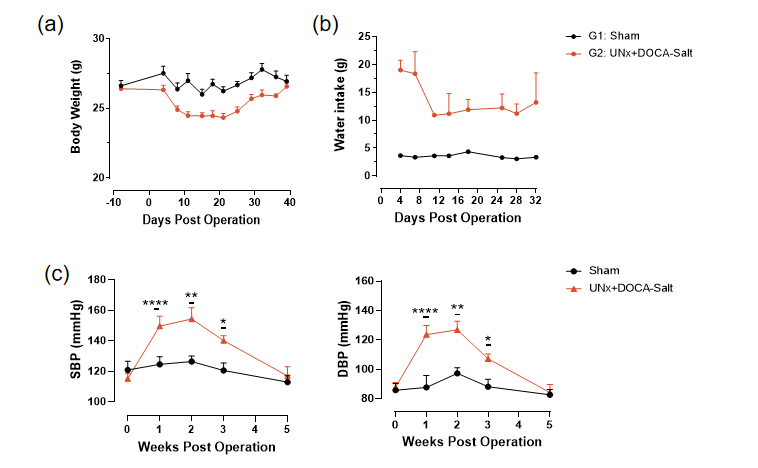Hypertension is a cardiovascular syndrome characterized primarily by elevated systemic arterial pressure, classified into primary hypertension and secondary hypertension. Primary hypertension accounts for over 90% of cases, with its etiology remaining unclear and associated with multifactorial interactions including genetic and environmental factors (e.g., high-salt diet, obesity, and mental stress). Secondary hypertension is caused by specific underlying diseases. The pathogenesis of hypertension includes abnormalities in neural regulation, renal dysfunction, and vascular structural changes. Epidemiological studies indicate that the prevalence of hypertension increases with age, with a global prevalence rate of approximately 30%-40%.
Deoxycorticosterone acetate (DOCA)-salt induces sustained hypertension by activating the mineralocorticoid receptor (MR) to promote renal sodium retention and suppress the renin-angiotensin system (RAS), while high-salt diet synergistically increases blood volume and vascular oxidative stress. Hypertension can be induced in mice by unilateral nephrectomy (UNx) and subcutaneous implantation of DOCA slow-release pellets, with 0.9% NaCl provided in drinking water. Elevated blood pressure can be assessed non-invasively via the tail-cuff method.
Study Design

UNx+DOCA-Salt elevates blood pressure in mice

Figure 2. (a) Body weight. After implantation of DOCA sustained-release tablets, mice exhibit weight loss under high-salt conditions. Three weeks later, upon depletion of the DOCA tablets, body weight recovers. (b) Water intake. (c) Changes in systolic and diastolic blood pressure. After implantation of DOCA sustained-release tablets, mice exhibit elevated blood pressure under high-salt induction. Three weeks later, upon depletion of the DOCA tablets, blood pressure returns to baseline levels. (Data presented as Mean±SEM, n=6-7 per group,*,**, ****denoted p<0.05, p<0.01, p<0.0001, respectively).
UNx + DOCA-Salt induces renal dysfunction in mice

Figure 3. (a) UACR level. (b) Cyp11b1 and Cyp11b2 expression level. (Data presented as Mean±SEM, n=6-7 per group,*, ** denoted p<0.05, p<0.01, respectively).

